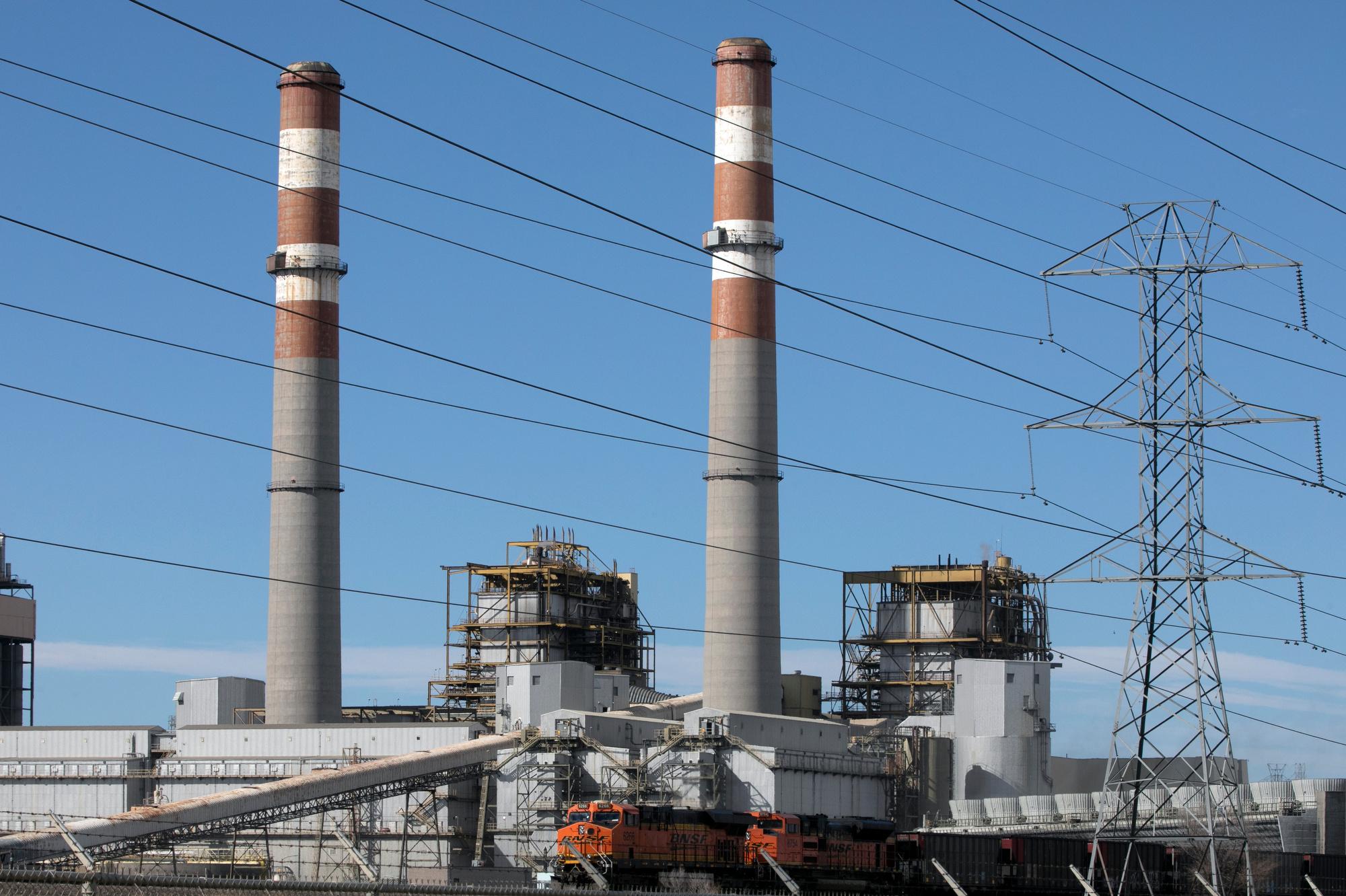
For decades, the Comanche Generating Station has dominated the landscape southeast of Pueblo, Colo.
The facility is both the state’s largest power plant and its largest source of climate-warming gases. Its smokestacks are visible dozens of miles in every direction, a reminder of coal’s enduring place in the local economy and Colorado’s power grid.
The power plant now also looms over a debate on the state’s approach to climate change.
State lawmakers are currently considering a bill that would require more aggressive enforcement to reduce greenhouse gas emissions. The proposal has split Colorado Democrats, who enjoy complete control of state government. Gov. Jared Polis has threatened to veto the legislation.
Local officials in Pueblo have come out against the climate bill because of the potential impact on Comanche 3.
Meanwhile, state Senate President Leroy Garcia, a Democrat who represents Pueblo, said there are active negotiations to amend the bill before it gets a full vote in his chamber.
While Garcia wouldn’t detail the discussions, he said the power plant’s fate is “one of the main sticking points.” In 2010, Xcel Energy completed Comanche 3, adding the state’s newest coal-fired power plant. The company hopes to keep it running until 2040 under a plan recently submitted to state utility regulators.
Local officials worry the proposed climate legislation could accelerate the retirement date. In a rare move, the Pueblo County Commission unanimously opposed the bill last month. County Commissioner Garrison Ortiz said any move to force the power plant to close sooner could have far-reaching economic consequences.
“With the huge impact of Comanche 3 in our community, that would put us in a very difficult spot,” Ortiz said.
The plant employs more than 100 people, according to Xcel Energy. Beyond jobs, the power plant also provides about $17 million in tax revenue a year to all government entities, Ortiz said.
Ortiz added the county is counting on Comanche 3’s tax funding for capital improvement projects voters approved in 2016. Those include new streetscaping in downtown Pueblo and an extension of the city’s historic Riverwalk. Property taxes from Comanche 3 provides 60 percent of the revenue to repay bonds for the projects, Ortiz said.
Environmentalists say the climate bill would not force the plant to close much earlier than Xcel already plans to, in 2040.
Environmental groups backing the climate legislation insist it wouldn’t force Xcel Energy to change its plans. Erin Overturf, the clean energy program director for Western Resource Advocates, said the initial bill would have required utilities to move to 100 percent clean energy between 2035 and 2040. While Overturf said it wouldn’t have impacted the retirement date, the provision has since been amended out.
“There’s nothing in SB-200 that would require Comanche 3 to retire early,” Overturf said.
Xcel Energy remains opposed to the legislation even after the amendments. Matthew Lindstrom, a company spokesperson, noted other aspects of the bill could force the company to shift the clean energy plan recently submitted to state regulators. Under an earlier state law, the final plan must reduce the utility's carbon emissions 85 percent below 2005 levels.
“While the future of Comanche 3 is not the primary basis for our opposition, the bill could accelerate the unit’s closure on a timeline that will negatively impact our communities and our employees,” Lindstrom wrote in an email.
State Rep. Daneya Esgar, a Democrat representing Pueblo, said she wouldn’t discuss the details of the bill until it reaches the state House. Nevertheless, she wishes the county commissioners had given lawmakers more time before taking a position.
Esgar added part of the work will be to balance the benefits and drawbacks of a powerplant like Comanche 3. While it provides jobs and tax revenues, the facility has also been “polluting our neighborhoods for years.”
“I just hope they have the grace and patience to see how it turns out,” Esgar said.








